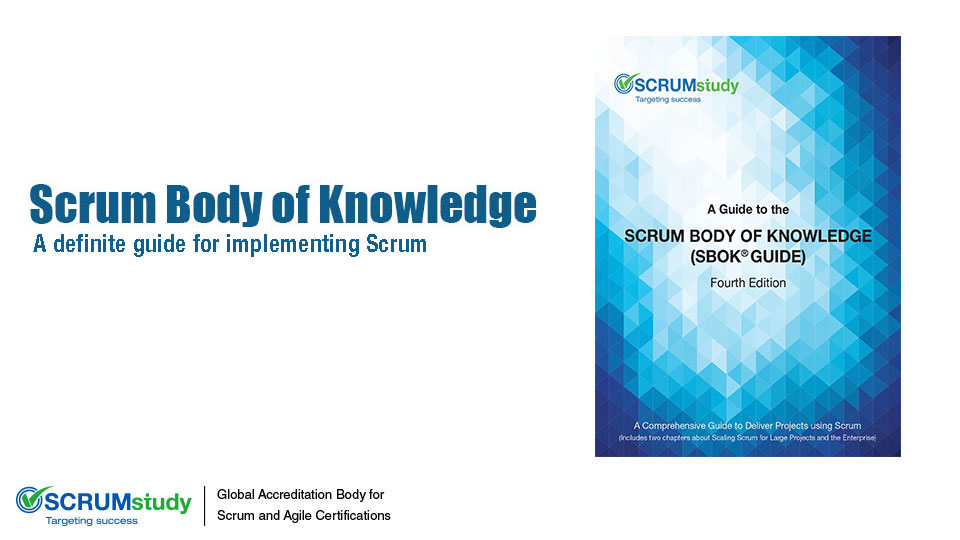Scrum Body of Knowledge - A definite guide for implementing Scrum
Posted by SCRUMstudy® on March 25, 2023
Categories: Agile Product Owner Scrum Guide Scrum Master Scrum Team
The Scrum Body of Knowledge (SBOK®) provides guidelines for the successful implementation of Scrum—the most popular Agile project management and product development methodology. It provides a comprehensive framework that includes the principles, aspects, and processes of Scrum.
Scrum, as defined in the SBOK®, is applicable to the following:
• Portfolios, programs, and/or projects in any industry
• Products, services, or any other results to be delivered to business stakeholders
• Projects of any size or complexity
The term “product” in this Body of Knowledge may refer to a product, service, or other deliverable. Scrum can be applied effectively to any project in any industry—from small projects or teams with as few as six team members to large, complex projects with up to several hundred team members.
This first chapter describes the purpose and framework of the SBOK® and provides an introduction to the key concepts of Scrum. It contains a summary of Scrum principles, Scrum aspects and Scrum processes. Chapter 2 expands on the six Scrum principles which are the foundation on which the Scrum framework is based. Chapters 3 through 7 elaborate on the five Scrum aspects that must be addressed throughout any project: organization, business justification, quality, change, and risk. Chapters 8 through 12 cover the 19 Scrum processes involved in carrying out a Scrum project. These processes are part of the 5 Scrum phases: Initiate; Plan and Estimate; Implement, Review and Retrospect; and Release.
These phases describe in detail the associated inputs and outputs of each process, as well as the various tools that may be used in each. Some inputs, tools, and outputs are mandatory and are indicated as such; others are optional depending on the specific project, organizational requirements, and/or guidelines set forth by the organization’s Scrum Guidance Body (SGB).

